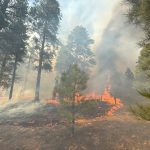
New ARPA bill stalls due to questions, concerns
WINDOW ROCK
Last week Navajo Nation leadership met at Twin Arrows Resort and Casino for a Naabik’iyati’ work session and reviewed legislation (No. 0257-21), the first American Rescue Plan Act new projects bill as presented by President Jonathan Nez and sponsored by Speaker Seth Damon.
In theory, the bill would allocate $1.16 billion of ARPA Fiscal Recovery Funds for infrastructure projects, including water ($301 million), electricity ($200 million), broadband ($208 million), housing ($100 million), and bathroom addition projects ($150 million), plus hardship assistance ($207 million).
In reality, the legislation is a working draft that will likely need to be overhauled to satisfy delegates’ concerns.
Many delegates expressed frustration with the lack of clarity as to how projects in the bill were prioritized and selected, whether the selection was equitable across agencies and chapters, and how they address the Nation’s COVID-19 pandemic response.
Without a clear plan and strategy explained by its authors, the bill essentially stalled before even getting out of the gate.
“To be candid, I was very disappointed in yesterday’s meeting because it lacked a vision and explanation and a persuasive element as to why these investments are the best investments and why this is the best legislation for our people,” Delegate Carl Slater told Navajo Times.
“There’s a lot of money going to capacity projects without appropriate justification on how they will materially improve the lives of our people and bolster our response to the pandemic,” he added.
Slater said he wants Damon and Nez to “persuade the Navajo people and to persuade leadership” and explain why the legislation is the best use of ARPA funds.
“I don’t think that this bill is going to work out if that doesn’t happen,” he said.
“Speaker, you need to grab the bull by the horns and just do it,” said Slater. “We cannot keep deferring around to this circus of different people presenting the same stuff that they’ve done for the past, I don’t know how many months, just saying the same thing over and over again.”
Several delegates also asked for a summary of the 250-page bill with a list of projects by chapter, which was not provided.
Right now, the legislation itself basically contains a stack of expenditure plans, said Slater.
“It really was a waste of time because the 24th Navajo Nation Council still has not received the list of projects from President Nez,” said Delegate Eugenia Charles-Newton. “We’re just being showed the surface. That was a huge problem.”
Charles-Newton said she cannot in her “right mind, or conscience,” vote for the legislation as is.
“It is troublesome that we’re talking about working together,” she said. “Where are these projects going, which communities are they going to? I feel like we’ve been going in circles. What’s the big secret here?”
In a follow-up press release, Damon said the Naabik’íyáti’ Committee will meet over the next few weeks to address any questions and concerns “before Christmas,” which means the bill will likely not be passed by Council in 2021.
“This is a working document,” Damon told the Naabik’iyati’ Committee. “I think the document here is not ready for legislation yet but I do believe we can make that document ready.
“I’m listening to everything that you’re saying and making sure that we can clarify to the best possible ability to make sure we can move forward and get something passed to help our Navajo people,” he said.
“Back to the drawing table’
Delegate Otto Tso said it appeared that many chapters in his region were left out of the legislation’s benefits entirely.
“As Western caucus chair, it really baffles me that I don’t see funds earmarked for those communities,” he said. “It requires sixteen votes to pass this legislation. I don’t think the votes are there.”
Tso pointed out once again that ARPA funds came down the pipeline based off of the number of Navajo citizens.
“I think, Mr. Speaker, we need to go back to the drawing table and even up these ARPA funds and actually serve the Navajo people out there,” he said.
Delegate Amber Kanazbah Crotty said when ARPA was passed by the federal government in March, the number one priority was to respond to COVID-19 public health emergency, and she didn’t see a detailed explanation of how that was being addressed in the bill.
“Nine months later we’re at the point to start allocating these dollars,” said Crotty. “If this funding was to address the COVID-19 emergency, we’ve lost nine months of that prevention work.”
She said now with the Delta surge, Navajo Area intensive care units are full again and funding is needed for home medical and long-term care.
“I’m trying to find in this legislation where that language addresses those issues,” she said. “Where is the immediate response to the COVID-19? We’re still delivering food, CHRs are still asking for PPE. When we have outbreaks in our communities, how are we providing those services?”
Crotty also said she and her agencies were promised a breakdown of what chapter projects are included in the bill.
“I have yet to receive that information,” she said. “I can say, speaking for my seven chapters, we still do not know exactly where our projects are in the legislation.”
Crotty said while the Division of Community Development website does have a list of what her chapters submitted for projects, it doesn’t indicate which of those is in the bill.
‘The people’ not consulted
While the bill states that based on the Council’s and president’s office’s “public consultation efforts,” it is in “the best interest of the Navajo people” to first enact the $1.16 billion plan for infrastructure and hardship, several delegates said their people were never consulted.
“Where we’re using the term “the people,’ I have a problem with that,” said Charles-Newton. “I’ve never been to an agency council meeting where ‘the people’ are allowed to speak. Usually, it’s just the chapter officials who are conducting business on behalf of that agency.”
Charles-Newton suggested removing “the people” language from the bill and replacing it with “elected officials” to reflect what really happened.
“It’s not the Navajo people, it was the elected officials who were consulted,” she said. “The people have not been consulted on this ARPA money.”
Furthermore, Charles-Newton pointed out that the 26 Naabik’iyati’ ARPA work sessions that, according to the bill, were organized by Speaker Seth Damon “to hear from the people,” did not in actuality include public input.
Moreover, chapter houses are still closed, she said, and many elders can’t access government conference calls or social media.
“Many of our elderly people would like to talk about this money, but we have not made an effort,” she said. “Without the chapter meetings, we cannot honestly say that we’re listening to the people.”
Charles-Newton said even the hardship piece of the legislation is “turning into a mess” because some delegates want to remove the 10% cap (in No. CJY-41-21) to increase payments above $600 while others don’t because it will take away from project funding.
She suggested splitting off the hardship assistance portion of the bill into a stand-alone legislation so it isn’t held hostage by the bigger bill.
“I’m going to request it as an emergency legislation,” she said. “If they don’t think it’s an emergency, then that will also be on the record.”
Charles-Newton predicted it will be at least another month before the bill is complete.
“When there is no communication between branches, the people suffer,” said Charles-Newton. “We’ve already wasted nine months. We pretty much have lost a year. It’s very unfortunate that we are in this situation.”
Bill needs to be ‘beefed up’
Slater said one of the main things missing from the bill is how infrastructure projects are going to help combat the pandemic and make the Nation more resilient.
“I agree with what shima Delegate Crotty said regarding the relationship to COVID and how that should really be at the forefront of the contemplation and construction of these legislations because that was the purpose for which this funding was provided to the Nation,” said Slater.
“I want to reiterate a request to provide a summary of the legislation and how the logic was developed for inputting different types of projects,” he said.
Slater said there was also no clarification by the president or speaker as to how projects that are not in the bill might be funded through other sources, such as through the Biden administration’s $1.2 trillion Infrastructure Investment and Jobs Act, the $2 trillion Build Back Better bill, and the Indian Health Service budget (for water/wastewater/sanitation projects).
“I don’t think that the communication from the speaker’s office or the president’s office has effectively conveyed that point that we are purposely choosing capacity or systemwide projects because they would not be eligible for funding from any other source,” he said.
“I think that needs to be provided to our people because otherwise it just looks like it’s a handout to NTUA,” Slater said.
Furthermore, he said the legislation doesn’t appear to be helping ordinary Navajo citizens who have to haul water on a daily basis.
“It just looks like it’s going to these systemwide improvements and there’s no explanation within this legislation to say, ‘this is why we’re choosing this and this is not why we’re choosing that,’” said Slater.
There is also a lack of communication on the direct benefits to the end user and the people, he said.
“To say that there is a dollar amount being invested does not automatically equate to an impact,” said Slater. “We need more details other than just this generic theory on how we’re going to ‘improve this system’ with this legislation. I’m talking real numbers.”
Slater added that in addition to hard data, having a written record of all of that information included in the legislation is “incredibly important.”
“That really needs to be beefed up,” he said. “Without it, I don’t know how I can support this legislation. I don’t know how a lot of this Council can support this legislation.”
Damon said he realized amendments would be needed. The status of rights-of-way clearances and home-site leases and how these would impact projects also needs clarity, he said.
“I will sit down with my colleagues again to make sure what we’re doing is not leaving anybody left out that’s viable,” said Damon. “Last but not least, there might be an amendment for hardship. That’s something that needs to be worked out immediately.”
As a public service, the Navajo Times is making all coverage of the coronavirus pandemic fully available on its website. Please support the Times by subscribing.
How to protect yourself and others.
Why masks work. Which masks are best.
Resources for coronavirus assistance



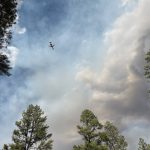
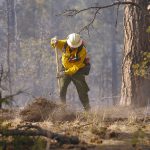
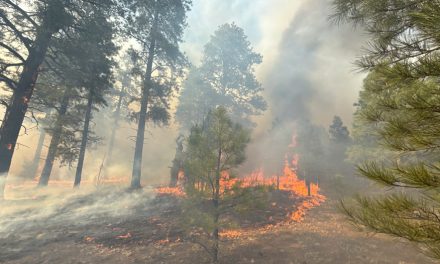
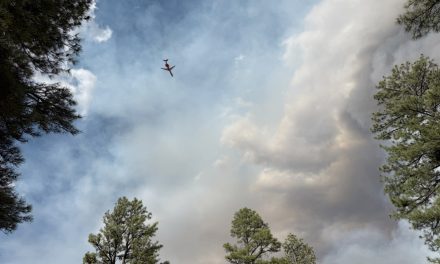



 Highway 264,
Highway 264, I-40, WB @ Winslow
I-40, WB @ Winslow